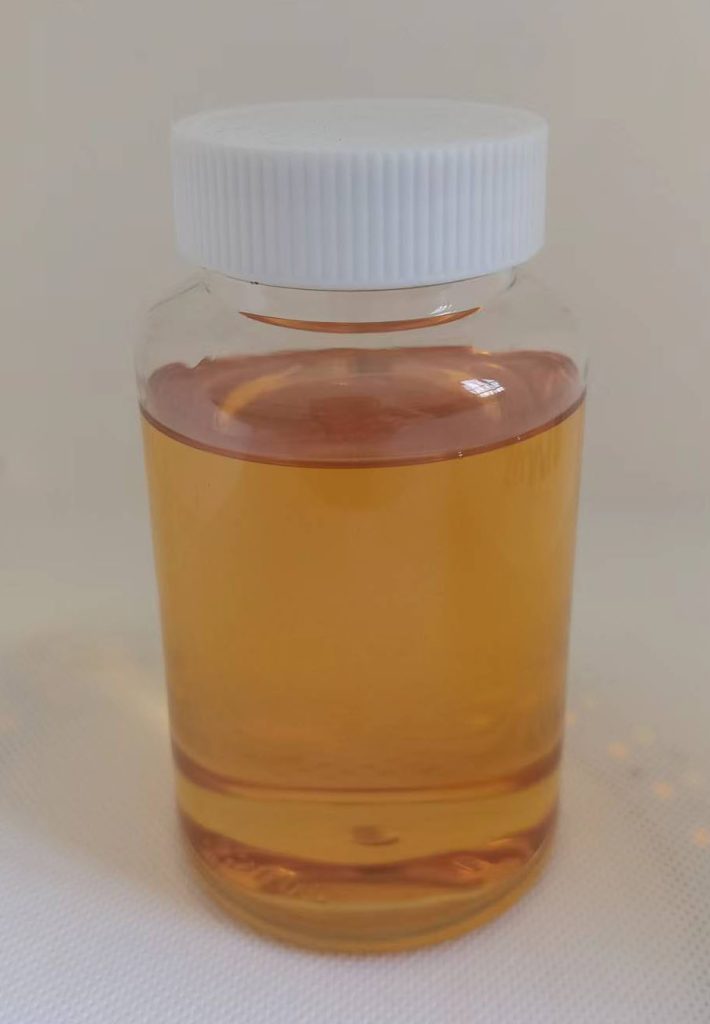Sorbitan Stearate
What Is It?
Sorbitan stearate | sorbitan monooleate is a widely utilized emulsifier derived from vegetables, with a special affinity for blending water and oil. Its unique properties make it particularly effective in forming water-in-oil emulsions. Notably, this non-ionic emulsifier boasts a low HLB (hydrophilic-lipophilic balance) value of 4.7, making it adept at creating water-in-oil emulsions.
Furthermore, it stands out as a PEG-Free and vegetable-derived option. Its prevalence in the cosmetic and skincare realm is due to its multifaceted role as an emulsifier and stabilizer in various products. This versatile agent originates from the combination of sorbitol and stearic acid, resulting in a saponification value ranging from 147 to 157.
Sorbitan stearate is a surfactant that merges the sweetness of sorbitol with the natural fatty acid stearic acid. Its primary function lies in its capacity to enhance the consistency of skincare and makeup formulations by acting as an emulsifier. This aids in both thickening and stabilizing the products. As a crucial component of many lotions and skincare items, Sorbitan monostearate also acts as a humectant, effectively binding moisture and promoting skin hydration.
Origin | Sorbitan monostearate
The creation of sorbitan stearate is a fascinating process that originates from the amalgamation of two key components: sorbitol and stearic acid. Sorbitol, a sugar alcohol, serves as the foundation for this chemical venture and can be sourced from diverse natural sources such as corn or berries. Stearic acid, on the other hand, emerges as a fatty acid obtained primarily from vegetable oils. The dynamic interplay between these elements initiates a reaction that leads to the formation of a distinct ester known as sorbitan oleate.
This transformation involves the intricate bonding of sorbitol and stearic acid, resulting in the birth of Sorbitan monostearate . This ester exhibits properties that are particularly valuable in cosmetic applications. However, the journey doesn’t end with the chemical reaction. To ensure its suitability for cosmetic purposes, the sorbitan stearate undergoes a purification process. This refining step is imperative to meet the stringent standards required for cosmetic and skincare formulations.
What is sorbitan stearate used for?
Names and Identifiers
Sorbitan stearate, known by various names and identifiers such as SORBITAN MONOSTEARATE, Glycomul S, sorbitan monostearate , and Span 60, is a compound that possesses a molecular formula of C24H46O6. These alternative names reflect its diverse applications and its significance across different industries.
Its molecular formula, C24H46O6, provides a glimpse into the composition of sorbitan stearate. This formula elucidates that the compound is composed of 24 carbon atoms, 46 hydrogen atoms, and 6 oxygen atoms. Such molecular insights help researchers and professionals comprehend the structure and characteristics of sorbitan stearate. The Chemical Abstracts Service (CAS) number of 1338-41-6 serves as a unique identifier for Sorbitan monostearate .
What are the side effects of sorbitan stearate?
Chemical and Physical Properties
In its physical state, sorbitan stearate manifests as a waxy solid, ranging in color from white to tan. Although it is nearly devoid of a strong scent, it possesses a mild, subtle odor. In terms of taste, it presents a bland profile, which is a valuable characteristic in various applications. The melting point of sorbitan stearate spans between 49 and 65 °C, revealing its sensitivity to temperature changes. This property is crucial, especially in industries where controlled heating and cooling processes are integral to the formulation of products.
Solubility is another vital aspect of its physical nature. Sorbitan stearate demonstrates solubility in specific organic solvents such as ethanol, isopropanol, mineral oil, and vegetable oil. However, it stands as averse to forming solutions with water and propylene glycol. This property influences its potential uses, as solubility often determines the compound’s ability to blend seamlessly into different formulations.
When subjected to elevated temperatures leading to decomposition, sorbitan stearate | sorbitan oleate emits acrid smoke and irritating fumes. This property has implications for safety considerations during handling and processing. Additionally,Sorbitan monostearate falls into the category of stearates, which is a class of chemicals characterized by their inclusion of stearic acid, a naturally occurring fatty acid, within their composition.
What Does Sorbitan Stearate do in a Formulation? | sorbitan monooleate
Sorbitan Monolaurate serves as a pivotal emulsifier, playing a vital role in elevating the tactile experience of a wide spectrum of skincare and makeup items. Its influence extends beyond surface aesthetics, delving into the very foundation of product formulation. One of its prominent attributes lies in its capacity to augment the texture, lending a luxurious and refined feel to the end products.
Beyond its textural enhancements, the capabilities of sorbitan oleate delve into the intricate realm of stabilization. It possesses the remarkable ability to imbue formulations with stability, ensuring that the amalgamation of various ingredients remains harmonious and consistent over time. This attribute is particularly significant in the context of cosmetics and skincare, where the maintenance of desired properties and appearances is essential.
Moreover, the role of sorbitan stearate isn’t confined to merely unifying disparate elements. It also exhibits its prowess as a dispersing agent, fostering the even distribution of components within the product matrix. This dispersion-enhancing quality aids in achieving homogeneity and consistent performance, enriching user experiences and product efficacy.
How to Use it in Formulation? | sorbitan monooleate
Incorporating sorbitan stearate into formulations involves a precise and strategic approach to maximize its effectiveness. To seamlessly integrate this ingredient into your product, a key step involves melting it into the formulation. This is best achieved by including sorbitan stearate within the heated oil phase of your production process.
By introducing sorbitan stearate into the heated oil phase, you ensure that it dissolves and disperses uniformly within the oil-based components of your formulation. This even distribution is vital for leveraging Sorbitan monostearate ‘s emulsification and stabilizing properties effectively.
The heated oil phase serves as a melting pot where various oil-soluble ingredients, including sorbitan stearate, are combined. Applying gentle heat to this phase facilitates the melting and homogenization of sorbitan stearate within the oils. Once fully melted and integrated, this phase can be gradually incorporated into the overall formulation, enabling sorbitan stearate to exert its emulsifying influence throughout the product.
Why is it Used in Cosmetics and Personal Care Products?
Sorbitan stearate finds its extensive application in a multitude of skincare products, particularly in the formulation of lotions and various other skincare essentials. Its role goes beyond being a mere component; it assumes a vital function as a humectant, effectively acting as a moisture-binding agent. This quality is particularly valuable in skincare, where maintaining optimal hydration levels is paramount.
Incorporating Sorbitan Monolaurate into personal care products like lotions, creams, and makeup serves multiple purposes. Its multifaceted nature contributes to enhancing the overall quality of the formulations. Notably, it lends a helping hand in the process of thickening these products, which imparts a desirable texture and consistency. This tactile improvement translates into a smoother application and a more luxurious user experience.
Furthermore, the inclusion of sorbitan stearate brings about moisturizing and conditioning benefits. As a key ingredient, it actively contributes to the efficacy of the skincare product by assisting in maintaining the skin’s moisture levels and imparting a soft and supple feel. This dual functionality aligns with the expectations of modern skincare, catering to both nourishment and aesthetic aspects.
Side Effects of Sorbitan Stearate
While not commonly associated with severe medical concerns, Sorbitan Monolaurate, like many substances, can potentially elicit certain non-medical side effects. These effects might encompass symptoms such as diarrhea, heightened gas production, and stomach discomfort. It’s important to note that these side effects are not extensively documented in medical literature.
While severe reactions are not typically observed, acknowledging the potential for skin irritation and other non-medical symptoms is pivotal. As with any ingredient, understanding the compound’s characteristics and practicing appropriate handling techniques and safety measures is crucial to ensure a safe and comfortable experience during both production and usage.
Who Supplies Sorbitan Stearate?
When it comes to the supply of Sorbitan Stearate, a notable and dependable source is Tripletchem, a prominent supplier and manufacturer based in China. Renowned for its commitment to excellence, Tripletchem stands out as a reliable provider of Sorbitan Monolaurate, offering both a supply and manufacturing solution. Our company prides itself on delivering products of the highest quality, adhering to rigorous standards that ensure consistency and performance.
Tripletchem’s dedication to maintaining stringent quality control measures sets it apart in the industry. By upholding these high standards, we ensure that the sorbitan monostearate we offer meets the criteria for optimal performance and safety. This commitment not only fosters trust among customers but also contributes to the overall credibility of the products. As a supplier and manufacturer, Tripletchem caters to the diverse needs of industries that rely on Sorbitan Stearate as a crucial ingredient. From skincare and cosmetics to various other applications, our company’s offerings contribute to the creation of top-tier formulations.
We welcome you to inquire about our products. We are willing to provide you with the best quality and price, and provide technical support and formula adjustments in your experiments.
Our packaging of sorbitan monostearate is 200 kilograms per barrel in iron drums, and 16 tons are packed in a 20 foot cabinet. We can provide packaging with pallets.


